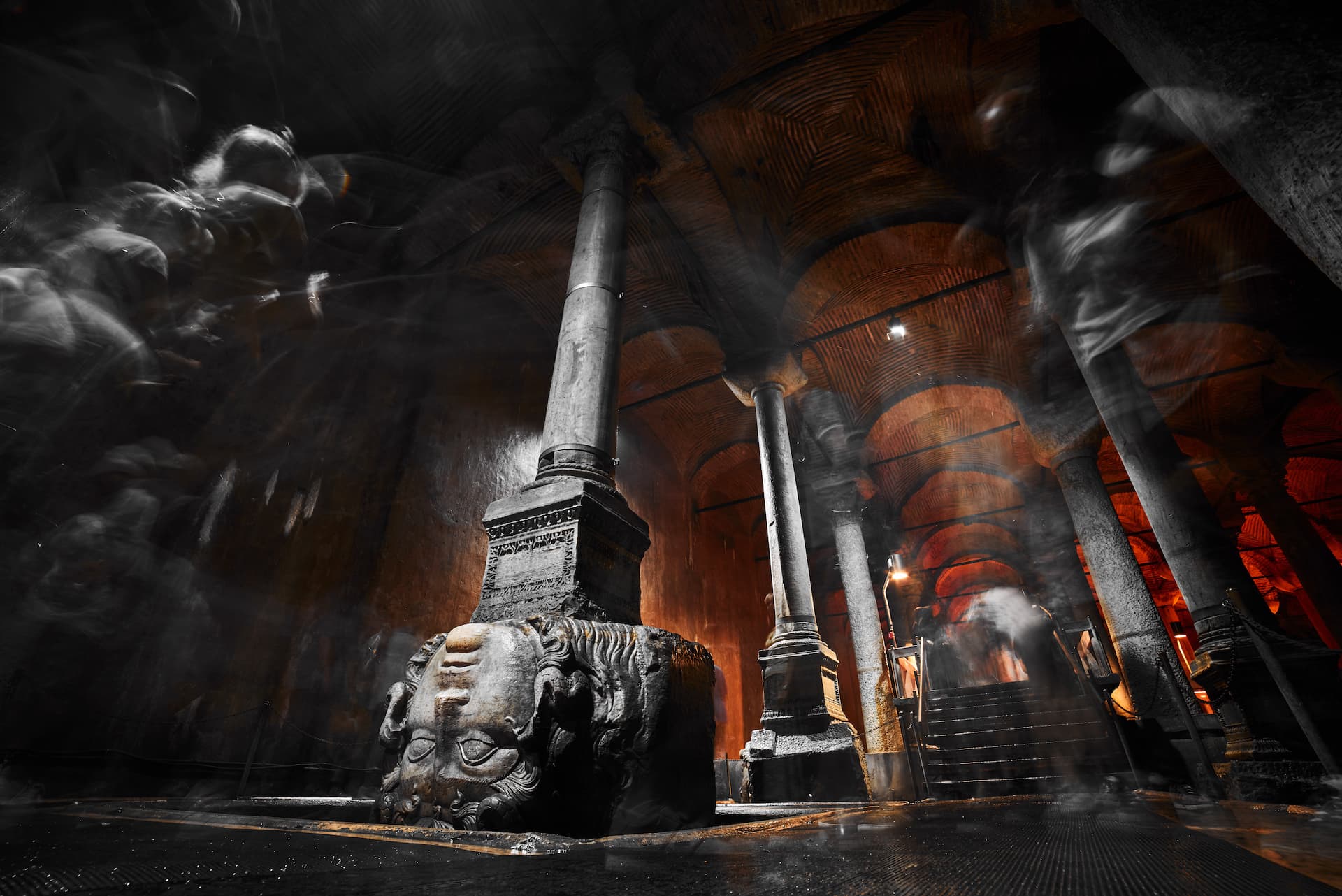
The Basilica Cistern, built by Emperor Justinian in 532, is also known as the Basilica Cistern because it is located under the Stoa Basilica. The cistern is a giant structure covering a rectangular area of 140 meters in length and 70 meters in width. There are 336 columns, each 9 meters high, inside the cistern, which is descended by a 52-step stone staircase. These columns, erected at intervals of 4.80 meters from each other, form 28 rows of 12 in each row.
These pillars rising in the water remind of a vast forest and impress the visitor as soon as they enter the cistern. The ceiling weight of the cistern was transferred to the columns by means of round cruciform vaults and arches. Most of the columns, which are understood to have been collected from older structures and carved from granite of various types of marble, consist of a large part of one piece, and some of them consist of two pieces on top of each other. The headings of these columns have different features from place to place. While 98 of them reflect the Corinthian style, some of them reflect the Doric style. The brick-built, 4.80-meter-thick walls and brick-tiled floor of the cistern were plastered with a thick layer of Horasan mortar and made watertight. This cistern, which has a total area of 9,800 square meters, has a water storage capacity of approximately 100 thousand tons.
The water of the cistern, in which 7 thousand slaves worked, was brought from the Eğrikapı water distribution center in the Belgrade forests, 19 kilometers from the city, with the help of the 971-meter-long Valens (Bozdoğan) aqueduct built by the emperor Valens in (368) and the 115.45-meter-long Mağlova Aqueduct built by the emperor Justinianus. Most of the columns in the cistern are cylindrical except for a few that are angular or grooved. Among these columns, the one decorated with the repetitions of Peacock Eyes, Pendent Branches and Teardrops in carving and relief draws attention. This column is the IV. It is similar to the columns in the triumphal arch of the great Theodesius (379-395) of the 19th century.
The two Medusa heads used as pedestals under the two columns in the northwest corner of the cistern are among the masterpieces of Roman sculpture art. Those who came to visit the cistern watched in amazement. Although there is no definite information about from which building these heads belonging to the 19th century were brought here, it is thought that they were removed from an ancient structure belonging to the Young Roman Age and brought here.
The Basilica Cistern was used for a while after the conquest of Istanbul by the Ottomans in 1453 and water was supplied to the gardens of Topkapi Palace, where the sultans lived. The cistern, which was understood to be not used by the Ottomans, who preferred tap water instead of still water, that is, running water, after they established their own water facilities in the city, was rediscovered by the Dutch traveler P. Gyllius, who came to Istanbul in 1544-1550 to investigate the Byzantine ruins.
The Basilica Cistern has undergone various repairs since its establishment. The cistern, which was restored twice during the Ottoman Empire, was first repaired in the 18th century by III. It was built by Architect Mehmet Ağa from Kayseri in the time of Ahmet. The second major repair in the 19th century, Sultan II. It is during the reign of Abdulhamid (1876-1909). The biggest repair in the Republican period was made in 1985. With the removal of 50 thousand tons of mud and the construction of the excursion platform, it was completed on September 9, 1987 and opened to visitors again.